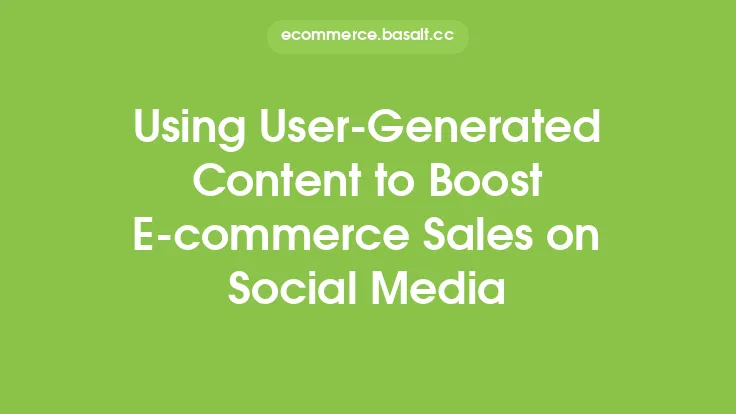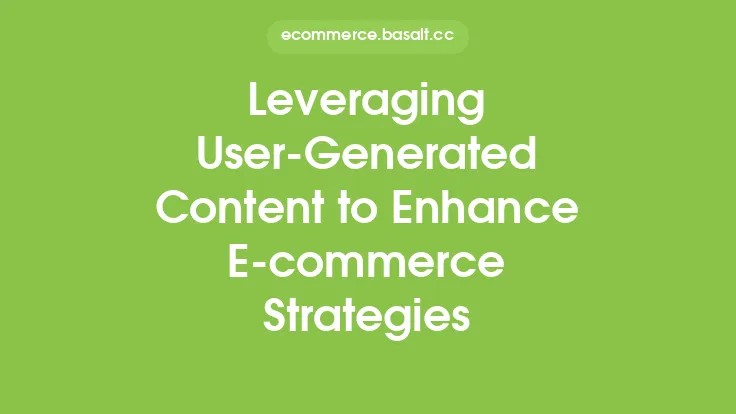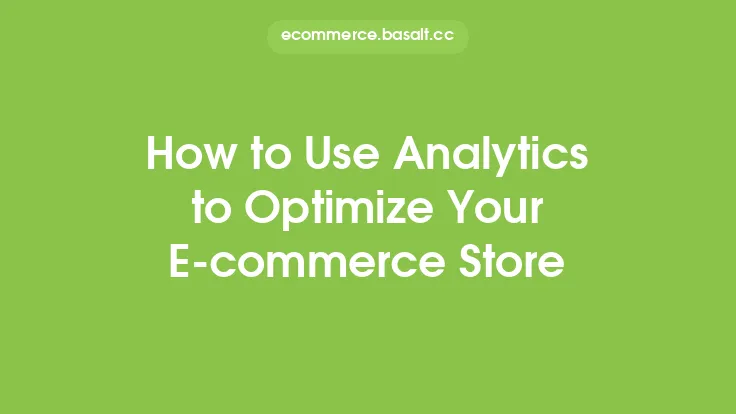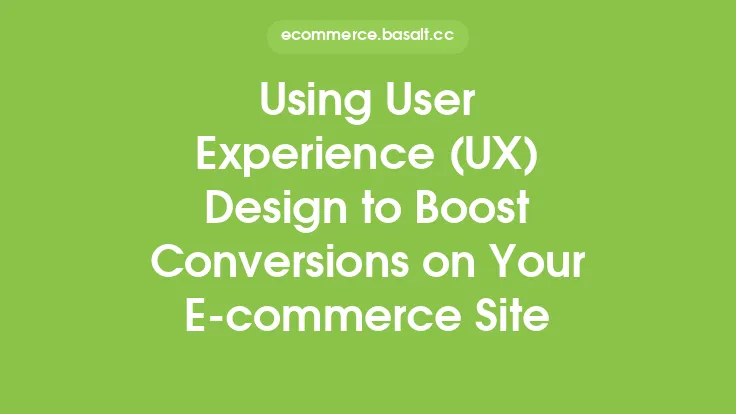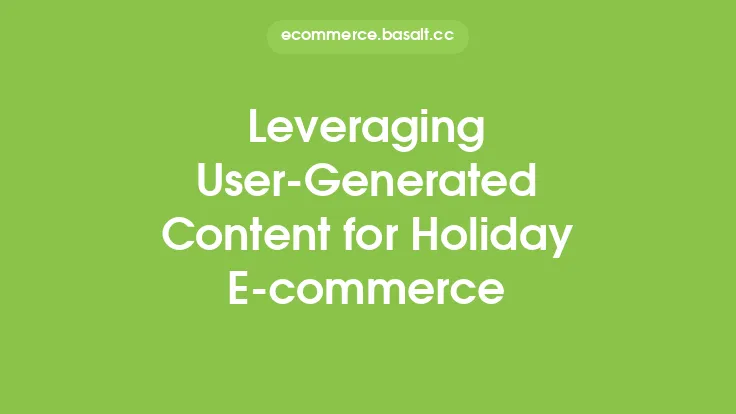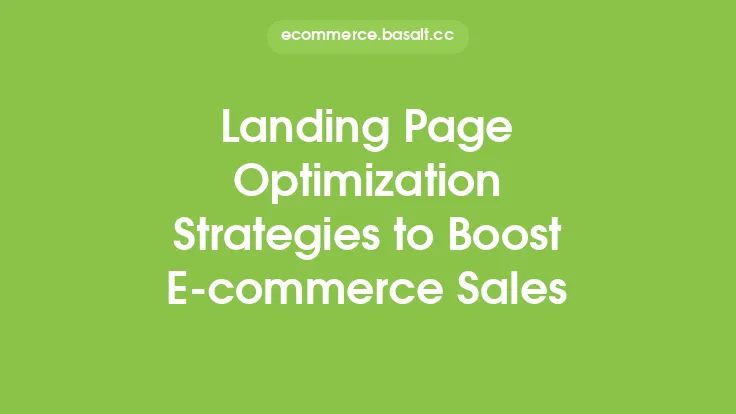In today's digital age, e-commerce businesses are constantly looking for innovative ways to boost sales and stay ahead of the competition. One effective strategy that has gained significant attention in recent years is the use of user-generated content (UGC). UGC refers to any content created and shared by customers, such as product reviews, ratings, photos, videos, and social media posts. By leveraging UGC, e-commerce businesses can build trust, increase engagement, and ultimately drive sales. In this article, we will explore the benefits of using UGC and provide tips on how to effectively incorporate it into your e-commerce marketing strategy.
Benefits of User-Generated Content
The benefits of using UGC in e-commerce are numerous. For one, it helps to build trust and credibility with potential customers. When customers see that other people have had positive experiences with a product or brand, they are more likely to make a purchase. UGC also provides social proof, which is a powerful motivator for consumers. Additionally, UGC can help to increase engagement and conversion rates, as customers are more likely to interact with content that is created by their peers. Furthermore, UGC can help to reduce the cost of content creation, as businesses can rely on their customers to create content for them.
Types of User-Generated Content
There are several types of UGC that e-commerce businesses can use to boost sales. Product reviews and ratings are one of the most common types of UGC, and they can be incredibly effective in building trust and credibility with potential customers. Customer photos and videos are another type of UGC that can be used to showcase products in a more authentic and relatable way. Social media posts, such as Instagram and Facebook posts, can also be used to promote products and engage with customers. Additionally, customer testimonials and case studies can be used to provide social proof and demonstrate the effectiveness of a product or service.
How to Collect User-Generated Content
Collecting UGC can be a challenge, but there are several strategies that e-commerce businesses can use to encourage customers to create and share content. One effective way to collect UGC is to offer incentives, such as discounts or free products, in exchange for reviews or photos. Businesses can also use social media contests and giveaways to encourage customers to share content. Additionally, businesses can use email marketing campaigns to ask customers to share their experiences with products or services. It's also important to make it easy for customers to create and share content, by providing simple and user-friendly review and upload processes.
How to Use User-Generated Content
Once you have collected UGC, there are several ways to use it to boost sales. One effective way is to showcase UGC on product pages, such as customer reviews and photos. This can help to build trust and credibility with potential customers, and increase the likelihood of conversion. UGC can also be used in social media marketing campaigns, such as Instagram and Facebook ads. Additionally, businesses can use UGC in email marketing campaigns, such as newsletters and promotional emails. UGC can also be used to create engaging and authentic content, such as customer testimonials and case studies.
Best Practices for Using User-Generated Content
There are several best practices that e-commerce businesses should follow when using UGC. First, it's essential to obtain permission from customers before using their content. This can be done by including a clause in your terms and conditions, or by asking customers for explicit permission. Additionally, businesses should always give credit to the customer who created the content, by including their name or handle. It's also important to moderate UGC, to ensure that it is accurate and respectful. Finally, businesses should use UGC in a way that is authentic and transparent, and that aligns with their brand values and messaging.
Measuring the Effectiveness of User-Generated Content
Measuring the effectiveness of UGC can be a challenge, but there are several metrics that e-commerce businesses can use to track its impact. One key metric is conversion rate, which can be used to track the number of sales generated from UGC. Additionally, businesses can use engagement metrics, such as likes and shares, to track the effectiveness of UGC in social media marketing campaigns. Customer acquisition cost (CAC) and customer lifetime value (CLV) are also important metrics to track, as they can help businesses to understand the long-term value of UGC. Finally, businesses can use A/B testing and experimentation to compare the effectiveness of UGC against other types of content.
Common Mistakes to Avoid
There are several common mistakes that e-commerce businesses should avoid when using UGC. One mistake is to fake or manipulate UGC, which can damage trust and credibility with customers. Additionally, businesses should avoid using UGC in a way that is spammy or intrusive, such as by including it in unsolicited emails or messages. It's also important to avoid using UGC that is low-quality or irrelevant, as this can reflect poorly on the business. Finally, businesses should avoid ignoring or deleting negative UGC, as this can be seen as dishonest or unresponsive.
Future of User-Generated Content
The future of UGC looks bright, as more and more e-commerce businesses recognize its potential to drive sales and build trust with customers. One trend that is expected to continue is the use of visual UGC, such as photos and videos, to showcase products and services. Additionally, businesses are expected to use UGC in more innovative and creative ways, such as by incorporating it into virtual reality and augmented reality experiences. The rise of social media platforms, such as TikTok and Instagram, is also expected to continue, and businesses will need to adapt their UGC strategies to these new platforms. Finally, the use of artificial intelligence and machine learning to analyze and optimize UGC is expected to become more prevalent, as businesses seek to maximize its impact and effectiveness.
